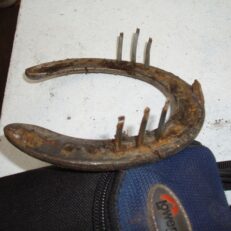The horse with a deviated pastern or cannon bone is a crooked legged horse. As part of the initial assessment, always assess if the horse is right or left handed in order to start on the biggest hoof. Next, always get the hoof in balance. It requires a correct equal balanced measurement between toe and heel and another balanced measurement between inside and outside (medial/lateral measurement). It is also necessary to achieve a T-square along the back of the pastern and the back of the heels.
In the straight legged horse, balancing the hoof will then allow the hoof to travel in a straight line from leaving the ground to where it next lands on the ground. However, on the crooked legged horse, it is interesting to note that it is still important to achieve the balanced hoof with the hoof landing square on the ground to the point where the hoof would actually travel in a straight line.
Continue Reading ››


